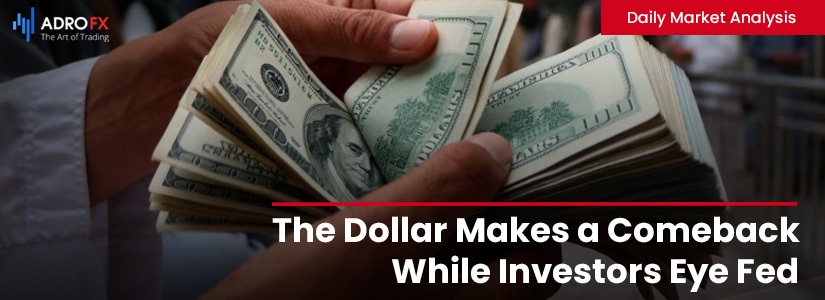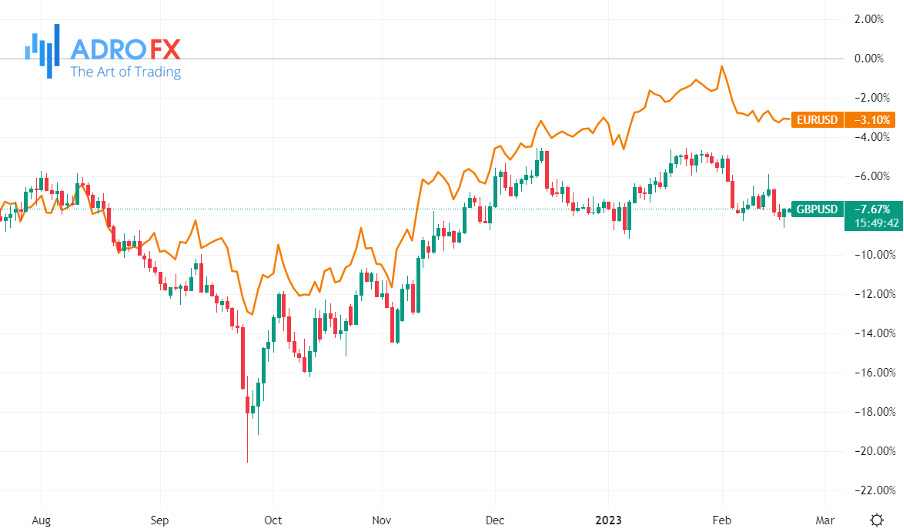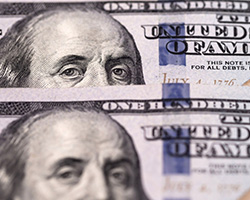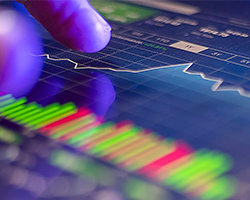The Dollar Makes a Comeback While Investors Eye Fed Minutes | Daily Market Analysis

Key events:
USA – Washington's Birthday
China – PBoC Loan Prime Rate
Last week was a watershed week for markets as it appeared that investors finally realized that the call for longer-term price appreciation was coming from major central banks, and it was affecting sentiment. The S&P 500 is down for the second straight year, and the end of the earnings season means that we can state that Q4 2022 was a low quarter for companies, and the number of positive surprises, combined with the size of those surprises, were below the 5 and 10-year averages. At the same time. the attention of investors this week will be drawn to the Fed minutes, the rate decision in China, and the first reading of the February PMIs.

First and foremost, when looking at Q4 corporate reports, all eyes are on the outlook and what analysts think will happen in the future. According to FactSet, analysts expect S&P 500 earnings to decline by 5.4 percent and 3.4 percent in the first and second quarters of this year, respectively, before starting to rise again in the second half of the year. For 2023, earnings growth is expected to be 2.3%. That's not impressive compared to the risk-free returns that can be obtained by buying Treasury bonds. If stocks are considered expensive and earnings growth is expected to be negative in the future, that is a dangerous mix for stock markets, and it is the main reason why stock markets are likely to struggle again, regardless of the Fed's projections.
The federal funds futures market has seen a huge revaluation in recent days. Less than a month ago, the market was expecting rates to peak below 5%, with a series of declines of about 80 basis points before the end of the year. Now U.S. rates are expected to peak at 5.25-5.5% by July 2023, and most market participants believe that rates will only be cut once before the end of the year to 5-5.25%. Just a month ago, rates were expected to be cut to 4.25-4.5% by the end of the year, according to CME's Fedwatch tool. This is a massive revaluation, which contributes to the strength of the dollar. The dollar index is making a comeback after a very sluggish start to the year. EUR/USD is trading below $1.07, having tried to break to $1.10 earlier this month. Meanwhile, GBP/USD is also trending lower and managed to hold at $1.20 at the opening of the new week. This is mainly due to the interest rate differential: there are growing expectations that the Bank of England will cut rates before the Federal Reserve, after Hugh Pill, chief economist at the Bank of England, suggested that if the British economy continues to weaken, a rate cut may be just around the corner.

While all eyes will be on Wednesday's Fed meeting minutes, it is worth keeping an eye on Tuesday's early PMI reports. If we see a further decline in those surveys, it could dampen expectations for a rate hike, especially in the US, and give markets a respite from selling pressure. It is worth noting that the U.K. and European surveys are expected to improve, albeit from a weak level. We will also keep an eye on China's central bank, which will announce its policy decision early Monday morning. The main short-term lending rate and the 5-year credit prime rate, which are China's benchmark interest rates, are expected to remain unchanged at this week's meeting after declining in January. The USD/CNY exchange rate started the week rising and has been rising steadily since hitting a low of 6.7 in early January. The November peak of 7.3 is still a long way off, and it will take a broader strengthening of the dollar and a significant surge in risk aversion to reach that high in the near term.

Overall, this week is likely to be another tough one for stocks, but we can conclude that growth continues to outperform now, and that may continue, believe it or not, because of oil prices. It may seem counterintuitive, but the oil sell-off is helping growth stocks in two ways: 1, impact on energy stocks, 2, impact on future inflation and the potential path of interest rates.









